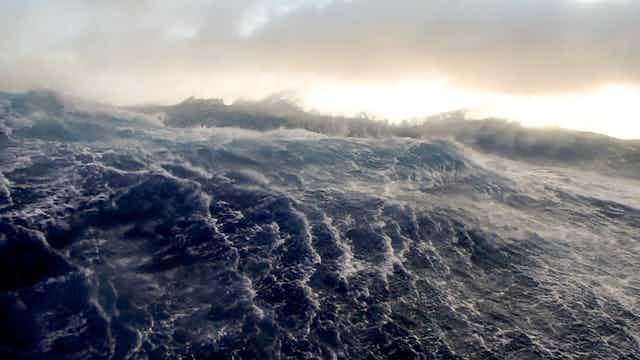It’s two years since Malaysia Airlines flight MH370 disappeared with 239 passengers and crew on board. Despite an intense search, the only confirmed wreckage has been part of a flaperon found washed up on a beach on the island of La Reunion, in the Indian Ocean.
There are reports this week that another possible piece of the missing aircraft has been found near the same island.
The debris found last week on a sandbank in Mozambique has been sent to Australia for testing to see if it’s from the missing Boeing 777-200ER.
The confirmation that the first wreckage was from the aircraft validated military radar data, which indicated flight MH370 diverted away from its scheduled route, flew back across the Malaysian peninsula and over the Indian Ocean. Why it diverted is still a mystery.
Flight MH370 was en route to Beijing after leaving Kuala Lumpur, in Malaysia, early on March 8, 2014. A couple of hours into the flight, it lost contact with air traffic controllers and disappeared from radar.
The initial search along the scheduled route to China was diverted when an analysis of satellite pings from the aircraft revealed the flight more likely ended up in the Indian Ocean, off the coast of Western Australia.
The Australian-led search has been going ever since but so far, there’s nothing to indicate exactly where the aircraft ended its flight. So two years on, is it time to give up the search?

Is the search over?
About 85,000 square kilometres of the 120,000 square kilometre search zone has been covered so far. The searchers are hoping the aircraft may be found in the area still to be searched.
But as the search nears its end without finding the wreckage, the focus is on where to go next. Should the search continue and, if so, where?
Many people would like to see the search continue and find out what happened to this aircraft. But searchers face a real conundrum.
All the analysis of satellite data and aircraft range estimates based on maximum and minimum fuel-burn scenarios places the most likely final resting place of the plane in the present search area.

Once that area has been searched without success, where do you go next?
A lot of effort will be expended on reviewing all the data and assumptions that pointed to the current search area. The aim will be to see if there was some detail that was missed; an error made in an assumption or an assumption that was overly optimistic; or anything that might suggest an amendment to the existing search area, or maybe a new one.
Oceanographers forecast that any floating wreckage originating from the existing search area would come ashore along the African coast, near La Reunion Island, about the time it did. This suggests, if the wreckage is not actually in the search area, it might be tantalisingly close.
It could be an option to just continue with a race track search pattern around the boundary of the existing search area, ever increasing the search area until the wreckage is found.
One possibility is that the aircraft is actually in the search area, and for some reason related to the search equipment fidelity, assumptions in analysis algorithms or underwater terrain anomalies, the wreckage has been missed. We could search for years and years and not find it.
And if we check and recheck all the data, assumptions and error tolerances and find nothing new, then when, if ever, do we decide to go back and look again in the same area?
No doubt the relatives of those lost with the aircraft would support the continuation of the search. But many others will argue that the search should be called off, especially as the cost of continuing will be hundreds of millions of dollars a year.
New technologies
Some will argue the money would be better spent on development and implementation of new technology applications to prevent aircraft from just disappearing from radar. Or, on ensuring important flight data is transmitted from the aircraft so the need to find the on-board flight recorders becomes less vital.
One of the many mysteries about flight MH370 is why the aircraft’s transponder was apparently turned off minutes after one of the pilots signed off from Malaysian air traffic control. Transponders let air traffic controllers know the location of an aircraft, so turning it off makes the aircraft disappear from radar.
One very interesting debate raging at the moment is whether it should be impossible for the transponders to be switched off by the pilot or anyone else on board. If that had been the case, then flight MH370 couldn’t have just disappeared.
But one of the long-term flight safety tenets is that pilots should be able to isolate all electrical circuits should any failure or fault in the system cause a fire. A design change to prevent pilots switching off transponders would introduce a new risk should any fault in a transponder lead to a fire.
Just theories
In the absence of any new information, there will be nothing concrete to support or debunk all the theories about what happened to flight MH370: hijacked by the pilot, or someone else, in-flight fire, decompression and other theories have all been aired in relation to flight MH370.
Unfortunately, without finding the wreckage and the recorders, that’s what they’ll remain: theories. There’s almost no hard data supporting any of them, just assumptions, circumstantial evidence and guesstimations.
The air safety fraternity would really like to know what happened to this aircraft, just in case there is a gremlin lurking in the aviation system just waiting to bite again. Here’s hoping not!

